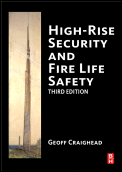Security dealers are rethinking the way they design and install commercial fire systems in the wake of new intelligibility requirements for emergency communications for those systems. Here’s what dealers need to know about the new requirements, what tools exist to help in meeting them and what to do when complying with requirements just isn’t a viable option.
A WHOLE NEW APPROACH
For years dealers installing emergency communications systems focused on whether the system was loud enough. But as Roopa Shortt, marketing leader for emergency communications systems, St. Charles, Ill.-based manufacturer System Sensor, explains, there’s a new focus now.
“Now it’s about ‘Can you understand it?’” notes Shortt.
And while earlier codes may have specified where speakers should be placed for sufficient volume, determining the correct speaker placement to support intelligibility requirements is considerably more complex.
“It’s more about an engineered system rather than meeting a code,” comments Ted Milburn, vice president of marketing for Cooper Notification, an emergency communications system manufacturer based in Long Branch, N.J.
Various branches of the U.S. military have had intelligibility requirements for several years, notes Duane Hannasch, president of Fire Alarm Control Systems, a San Antonio-based security dealer. More recently intelligibility requirements found their way into the 2010 version of the National Fire Protection Association’s National Fire Alarm and Signaling Code, known as NFPA 72.
And even when an installation is not subject to a code requirement for intelligibility, there may be compelling reasons to make sure an installed system is highly intelligible. Customers with large facilities, particularly those with a campus environment that includes multiple buildings, should make a point of establishing incident response procedures, advises David Cook, chief operating officer for Holland, Mich.-based emergency communications equipment manufacturer Code Blue.
Incident response procedures should be comprehensive, covering fire as well as other potential emergency situations, and should specify how to handle each situation — including what information should be delivered over emergency communications systems, notes Cook. And to be effective at delivering that information, the emergency communications system must be intelligible.
Samuel Shanes, chairman of Niles, Ill.-based emergency communications system manufacturer Talk-A-Phone, outlines how an intelligible campus-wide emergency communications system might be set up. If, for example, a fire were detected in a dormitory, a message inside the dorm and immediately outside of it might warn people to leave the area, explains Shanes. A little farther out, a message might tell people to stay away. And even farther away, the message might advise people that a localized fire in the dorm is under control.
PLANNING AN INTELLIGIBLE SYSTEM
Sources interviewed for this story outline a couple of different measurement scales that have been established for intelligibility, including the common intelligibility scale, known as CIS, and the speech transmission index (STI).
NFPA 72 Version 2010 does not mandate specific intelligibility targets, instead leaving that up to the local authority having jurisdiction, explains Milburn. The NFPA code does recommend, however, that either CIS or STI might be tools that fire protection professionals can use to help ensure their systems are intelligible — and some sources believe the NFPA eventually may make some of these recommendations mandatory.
Both CIS and STI are indexes that rate the intelligibility of communications on a scale of 0 to 1, with 1 indicating the best performance and 0 indicating the poorest. Both standards originated outside the fire protection industry. STI, for example, was developed in the Netherlands for tank communications, notes Bruce Olson, head of advanced technical support for the Americas for Ahnert Feistel Media Group, which has U.S. headquarters in Minneapolis. AFMG is the developer of EASE Evac, a predictive modeling software tool for STI that is used by some security dealers for help in designing commercial fire installations.
According to Olson, it is generally accepted that the recommended minimum intelligibility level for STI is 0.5. On the CIS scale, Milburn says the NFPA recommends a minimum reading of 0.7.
EASE Evac and similar tools from other manufacturers aim to predict in advance the level of STI or CIS performance that an installation will achieve by inputting the dimensions of the area to be protected, the location of speakers within that area, the make and model of speaker used, the types of floor and wall covering used and other factors.
As Olson explains, the STI index is determined by factors such as reverberation time, how long it takes sound to decay, ambient noise or how much sound is in the room.
“With the surfaces in the room you can predict reverberation time,” explains Olson. “With noise, we usually specify that we know in this kind of room, it will be this amount.”
In a conference room, for example, Olson says one might expect a noise level between 30 and 40 decibels (db), while in a mechanic’s room, the noise level might be in the 60 or 70 db range.
The most challenging wall and floor surfaces are those that are highly reflective, observes Shortt. A two-story glass atrium would be challenging because “glass is very reverberant. The sound bounces all over,” Shortt explains.
Conversely, carpeting and some other floor and wall coverings help prevent sound from bouncing all over.
In comparison with the way dealers have traditionally done emergency communications for fire systems, the new intelligibility target tends to dictate the use of a higher number of lower-volume speakers, explains Milburn. Some predictive intelligibility software recommends speaker placement or technicians can position speakers themselves and adjust as needed.
Under certain conditions, such as areas with high levels of ambient noise, technicians may find it virtually impossible to design an intelligible system. If so, AHJs typically are empowered to make exceptions — particularly if occupants can easily get to an area where it is possible to deliver an intelligible message.
Such areas are known as “areas of refuge,” explains Shortt. In a loud factory, for example, people can be trained that when an alert light goes off, they should go to the area of refuge for information.
The important thing about exemptions, Milburn says, is that “the local authority has to be brought in at the front end of the project.”
Another up-front requirement may be to provide the local authority with drawings showing areas to be protected and where speakers will be placed. An important concept in meeting such requirements is “acoustically distinguishable spaces,” explains Shortt.
As she explains, individual rooms typically would be acoustically distinguishable spaces. But if an installation has multiple rooms with identical layouts and will have identical speaker placement, those rooms would be defined as a single acoustically distinguishable space and a single drawing would serve for all of them.
OTHER PLANNING METHODS
Intelligibility experts have different opinions about how heavily dealers should rely on the output of predictive modeling programs in planning emergency communications systems for commercial fire installations. Hannasch says Fire Alarm Control Systems verified that its predictive modeling software was highly accurate by comparing it with real-world measurements. Accordingly the company is now comfortable relying largely on that software.
Some other sources advise dealers to also double-check their speaker placement by moving a test speaker to each planned location and taking real-world measurements for each installation. Some manufacturers of large-scale emergency communications systems designed for outdoor use — including Code Blue and Talk-A-Phone — have vehicles available that are equipped with test systems. Using these vehicles, customers can easily move equipment from one location to another for test purposes.
A third option to help in planning an intelligible emergency communications system is to talk with another organization that has installed a similar system, advises Shanes.
Military Installation Underscores Intelligibility Challenges |
|
Duane Hannasch, president of San Antonio-based security dealer Fire Alarm Control Systems, is no stranger to the concept of intelligibility for emergency communications systems. The company has done considerable work for the U.S. military, which has had intelligibility requirements for such systems for several years. The U.S. Army and Air Force recommend 0.8 on the common intelligibility scale (CIS), while the Navy and Marines look for a CIS measurement of 0.7, explains Hannasch. Recently Fire Alarm Control Systems completed an installation at Fort Sam Houston that included emergency communications for fire and mass notification for multiple new buildings, which had to meet the military intelligibility requirements. The dealer’s experiences offer a flavor of the complexities and challenges that other dealers also may encounter in meeting intelligibility requirements for commercial fire systems. When Fire Alarm Control Systems initially began the work at Fort Sam Houston, planners determined speaker placement based on rules of thumb the company had established based on previous experiences. Typically speakers were mounted at about half the ceiling height, for example — and a solid door was estimated to reduce the sound level by about 10 db. At the time of installation, the company could use a CIS meter to determine the intelligibility level at that time, but often it was not representative of the final result. Often the installation occurred before construction had been completed, without the final wall and floor coverings. Ultimately, installers had to wait until construction was completed to conduct representative intelligibility tests and install additional speakers if needed. There is still no getting around the need for a final real-world test shortly before final inspection. But Fire Alarm Control Systems no longer relies so heavily on rules of thumb. Instead installation planners use intelligibility prediction software, which the company has found to be highly accurate, to determine the correct number of speakers and correct speaker placement. The software also can be used to pinpoint potential problem areas. Among the rooms included in the Fort Sam Houston installation was a kitchen with highly reflective surfaces where planners determined that there was no way to meet target intelligibility levels in that environment. The company requested and was granted an exemption from meeting intelligibility requirements for that room, provided that the room included two strobe lights — a clear one to indicate a fire alert and an amber one for mass notification. When the strobes are lighted, employees are alerted to step into an adjacent dining room, where they can hear the speakers that have been installed there in compliance with intelligibility requirements. Fire Alarm Control Systems used EASE Evac software from Ahnert Feistel Media Group in planning the intelligible emergency communications system at Fort Sam Houston. Similar software is also available from several other manufacturers. |









